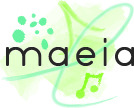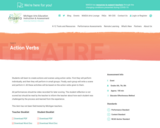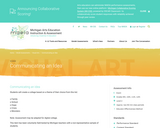
This is a dance performance assessment created by the Michigan Arts Education Assessment and Instruction project (MAEIA).
Students will create a dance phrase based on a specific animal living in a specific habitat. The student will then consider what adaptations the chosen animal would have to make if it was moved to a distinctly different habitat and create a variation based on the proposed adaptations. This task could be modified for use with third- and fourth-grade students by eliminating the variation.
This item has not been field-tested by Michigan teachers.
This performance assessment addresses the following standard(s):
Content Standard(s)
ART.D.II.EL.4 – Create a dance phrase, accurately repeat it, and then vary it making changes in the elements of dance: time, space, force, and energy.
ART.D.II.3.4 – Demonstrate the ability to make a movement sequence using the elements of time, space, and force.
ART.D.II.4.4 – Demonstrate the ability to design a movement sequence using factors of the elements of time, space, and force.
ART.D.II.5.4 – Create a dance phrase, accurately repeat it, and then vary it by making changes in the elements of dance: time, space, force, and energy.
Performance Standard
D.EL.C.1 – Students can create stationary, axial, and locomotor movement, apply level/tempo/dynamic change, and assemble movement based on literal and abstract concepts.
NCAS Anchor Standard
DA:Cr2 – Organize and develop artistic ideas and work.
Click "view resource" to access more information about the item, including the student booklet and the scoring rubric.
- Subject:
- Arts and Humanities
- Performing Arts
- Material Type:
- Assessment
- Author:
- Michigan Arts Education Instruction and Assessment
- Date Added:
- 10/02/2020







